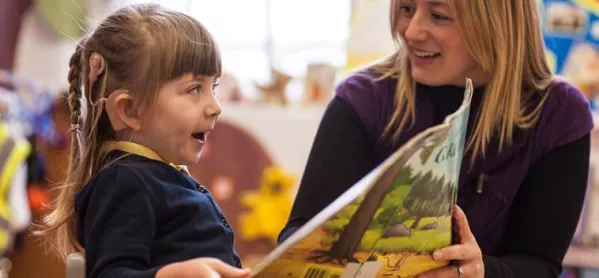Note: This article uses the term “deaf” to refer to all levels and types of hearing loss.
Every week, 34 children in the UK are born deaf - and while deafness is not a learning disability, the barriers that hold deaf children back can be huge. With research showing how crucial early years education is to later development, we can’t take the risk of early years teachers not understanding deaf children’s needs and not knowing how best to communicate with them.
But there are some easy tips for early years professionals to help make sure that no deaf child falls behind.
1. Listen to parents of deaf children
Every deaf child is different, and parents are best placed to know how best to support their child and how their child communicates. With many different levels of deafness, each with different support needs, it’s essential to sit down regularly with a deaf child’s parents to work out how best to support their child. You can also seek information and advice from your local authority specialist teachers of the deaf.
2. Get the room right
Big, open-plan, noisy nurseries can be a difficult environment for deaf children. Close doors to noisy corridors and windows to playgrounds and busy roads. Background noise that you might not notice will be amplified by hearing aids, so turn off computers that aren’t needed and put stoppers on chair and table legs to help deaf children follow conversations and activities more easily. It’s also important to think about making the room less echoey. Can you have carpets instead of wood floor and put up displays on big bare walls so they absorb sound?
3. Communicate clearly
Make sure the deaf child sits where they can see your face clearly and where lip reading is easiest. Make sure only one person speaks at once. Never cover your mouth, or speak with your back turned. It’s really important to be visual, too, so use gestures or actions to illustrate your point when speaking.
4. Make use of technology
There are numerous opportunities to use technology to support deaf children’s learning. A radio aid cuts out background noise and amplifies your voice straight into a child’s hearing aid or cochlear implant. If budgets allow, you could install a sound field system so the sound of your voice is even across the room, even if you move around or turn your back.
5. Involve their friends
Without support, deaf children may find it harder to make friends and can be at risk of bullying that can devastate their childhood. Six out of 10 deaf young people report having been bullied because of their deafness. One of the main ways of combatting this is by involving their hearing classmates, making sure they understand what being deaf means, and knowing how to communicate with and involve them. You could even read books like Daisy and Ted’s Awesome Adventures by Alex Naidoo (National Deaf Children’s Society), a story for under-5s to help them learn how to play with a deaf classmate.
Ian Noon is head of policy and research at the National Deaf Children’s Society
For more information about deafness in early years settings, consider attending the National Deaf Children’s Society’s conference for early years professionals on 8 June at Aston University
Want to keep up with the latest education news and opinion? Follow TES on Twitter and like TES on Facebook


